If you're considering ending your utility service contract, it's important to approach the situation with clear communication. Terminating a contract can be a daunting task, but knowing the right steps can make the process smoother. In this article, we'll guide you through creating a professional termination letter that conveys your intentions while ensuring you follow all necessary protocols. So, if you're ready to take the next step, read on for practical tips and a helpful template!

Account details and service address
The termination of utility service contracts requires careful attention to account details and service address specifications. The account number, often a unique identifier assigned by the utility provider, can usually be found on billing statements. The service address refers to the physical location where utility services, such as electricity, water, or gas, have been rendered. Providing an accurate service address, including street number, street name, city, state, and zip code, is essential for processing the termination request promptly. Notifying the utility provider ahead of time, typically 30 days, can ensure a smooth discontinuation of services and avoid potential final billing complications.
Effective date of termination
The termination of the utility service contract becomes effective on the specified date, which is critical for both the provider and the consumer. The notice period is typically outlined in the original contract (often 30 days), requiring formal communication of intent to terminate the agreement. The designated effective date signals the final day of service, affecting billing cycles and the initiation of disconnection procedures. For electric and water services, this can influence the final meter readings, ensuring an accurate final bill. Additionally, any outstanding account balances must be settled prior to this termination date to prevent collections or disputes over unpaid charges.
Reason for termination
Utility service contracts, such as those for electricity or water, can be terminated for several reasons, including non-payment, service disruptions, or relocation. Non-payment occurs when a customer fails to pay bills consistently over a specified period, usually 30 to 90 days. Service disruptions may arise from issues like equipment failure or extended outages that significantly affect the customer's ability to use the service. Relocation typically involves moving to a different geographical area where the utility provider does not operate. In some cases, customers may choose to discontinue services due to personal circumstances such as job changes or financial constraints. Each reason for termination often requires different documentation and notification procedures as set by local regulations or the utility provider's policies.
Final meter reading and billing instructions
Upon termination of a utility service contract, such as electricity or water service, it is essential to schedule a final meter reading (the last recorded usage measurement), typically conducted by a utility company representative. This reading (date and time should be documented) determines the final billing amount based on usage (measured in kilowatt-hours for electricity or gallons for water). Customers must provide their forwarding address for the final bill (sent within a stipulated period, often 30 days post-reading) and any refundable deposit (if applicable) should be calculated and returned accordingly. Ensure all equipment, such as meters, remains accessible for the final inspection. Adhering to local regulations (specific contractual terms vary by state or region) will facilitate a smooth termination process and accurate billing.
Contact information for follow-up communication
Termination of utility service contracts requires formal communication detailing the customer's information and account status. Account number serves as a unique identifier associated with the customer's service agreement, while contact information, including phone number and email address, facilitates follow-up discussions regarding any final charges or account reconciliation. Customers should specify the intended termination date and any necessary arrangements for the return of equipment, such as routers or meters, ensuring a smooth transition. Additionally, retaining a copy of the termination notice is essential for future reference in case of disputes or inquiries about the account closure.

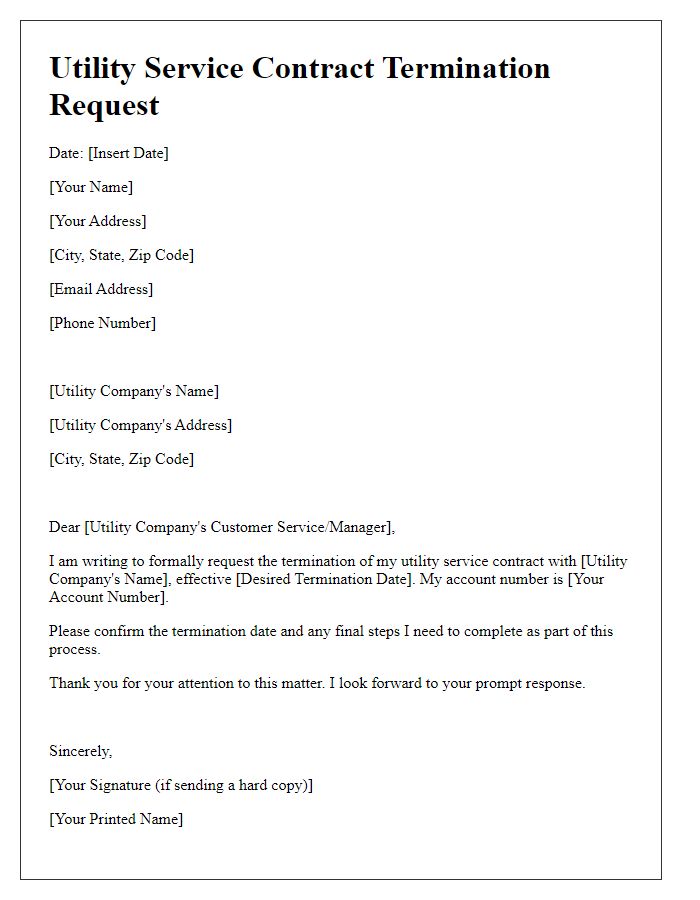
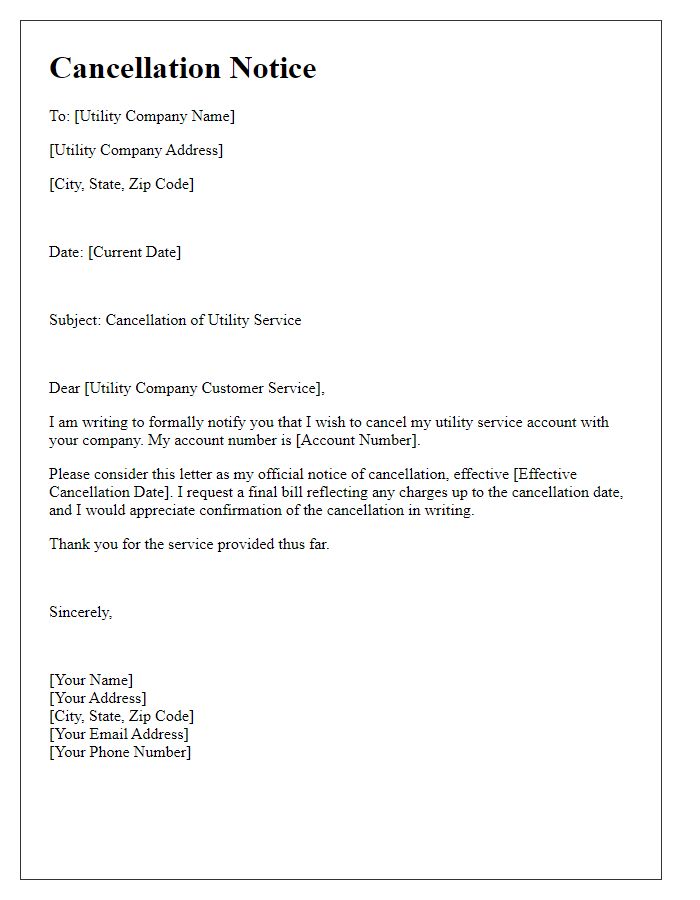
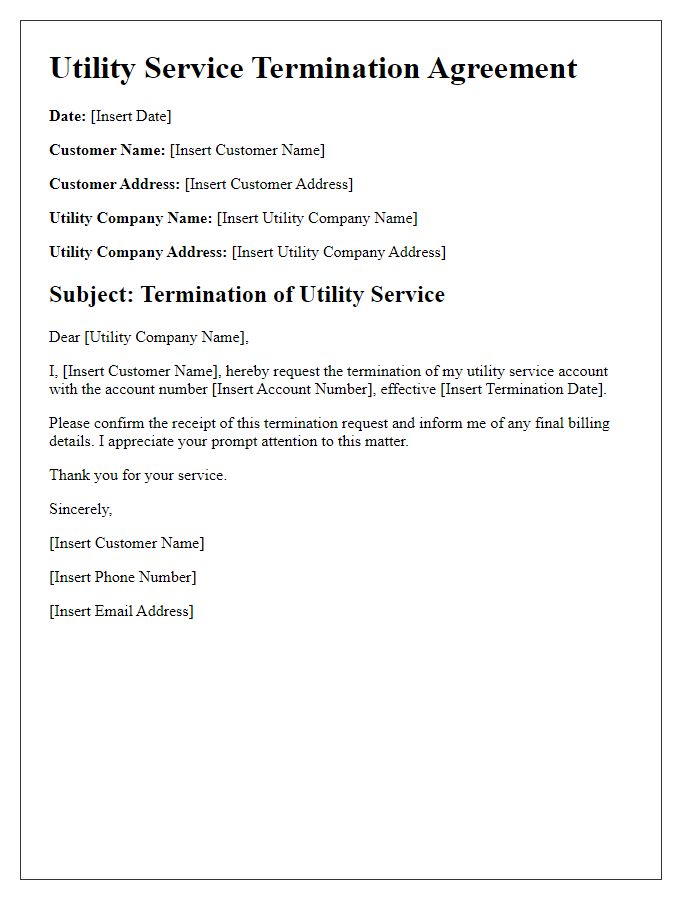
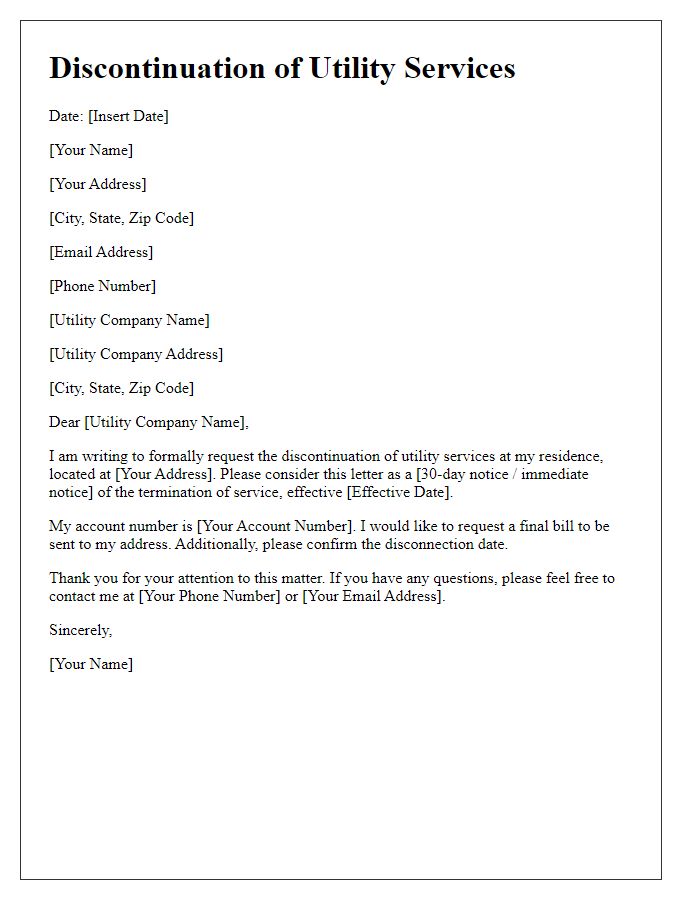
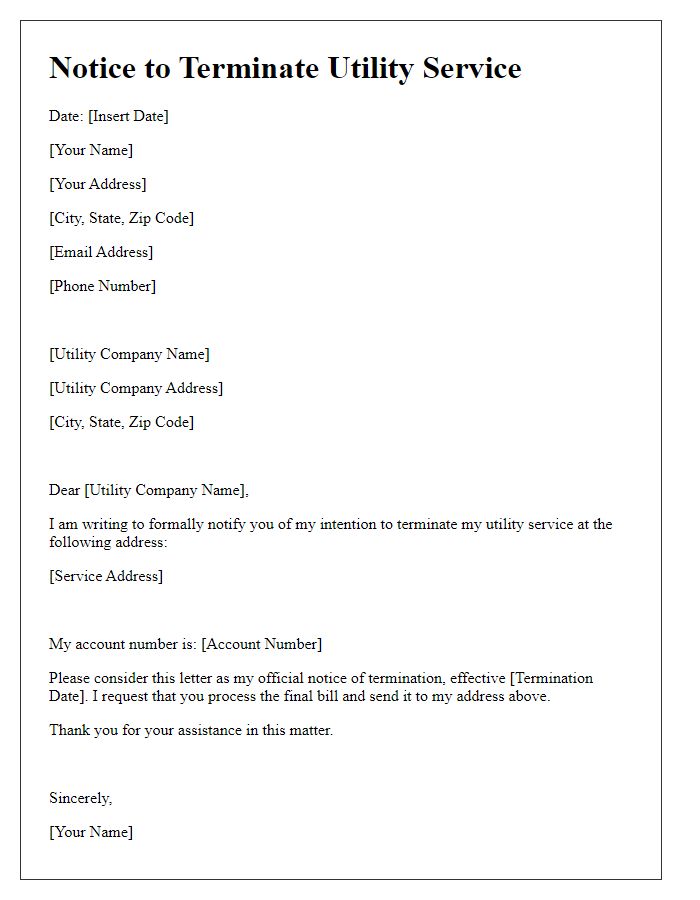
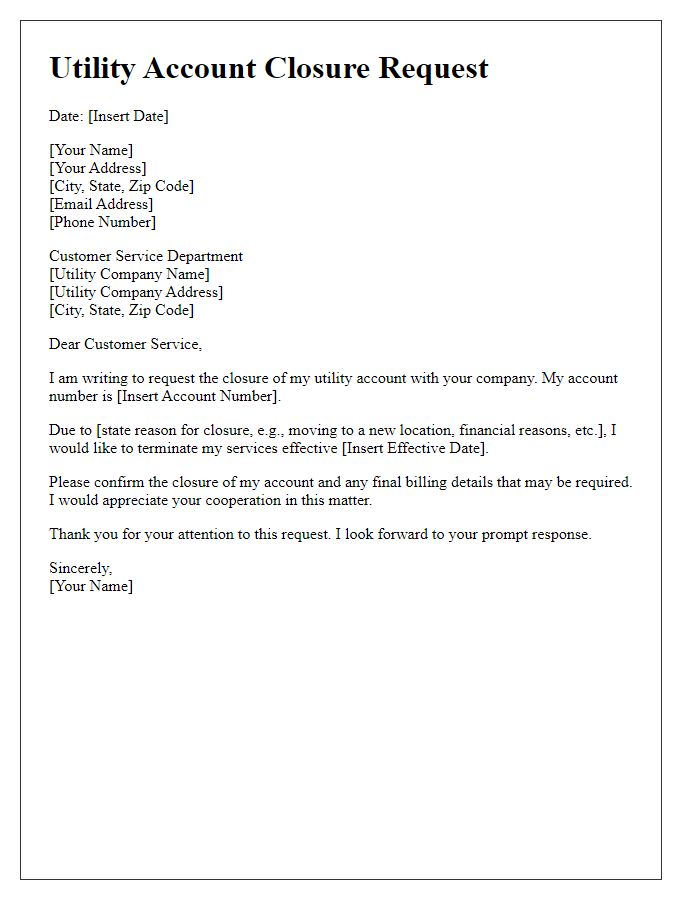
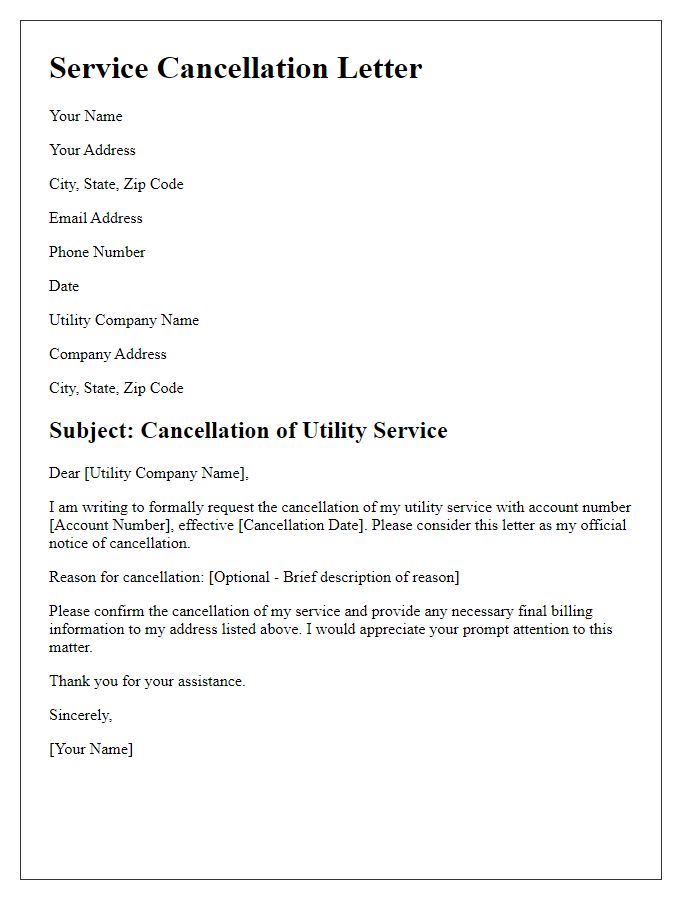
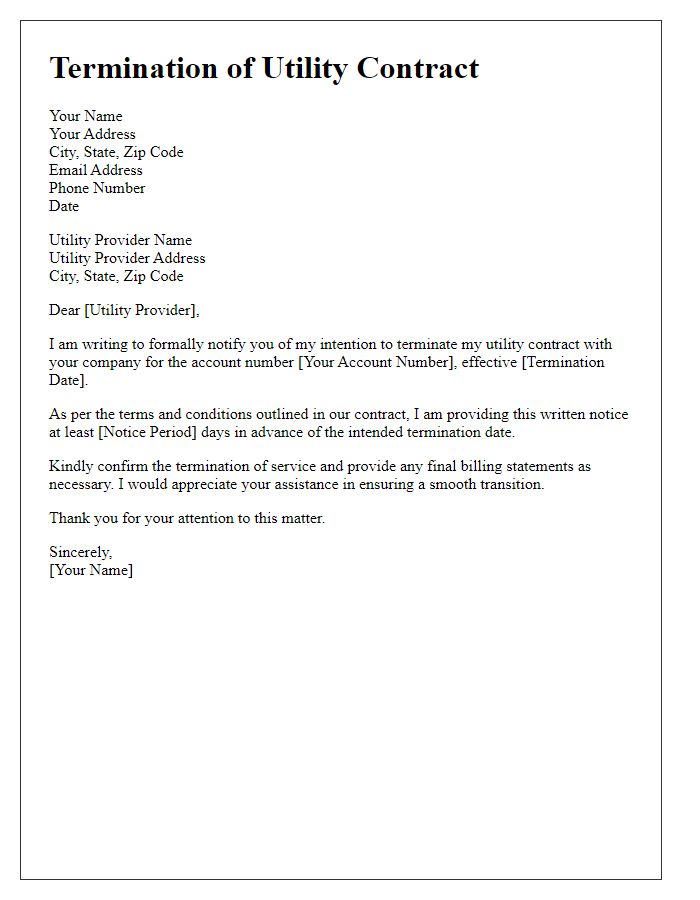
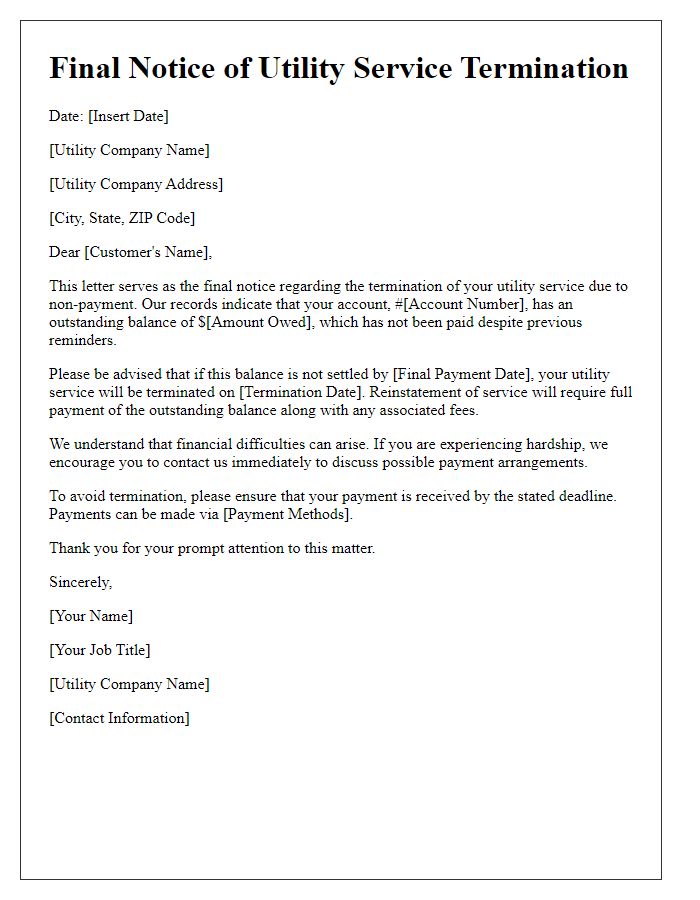
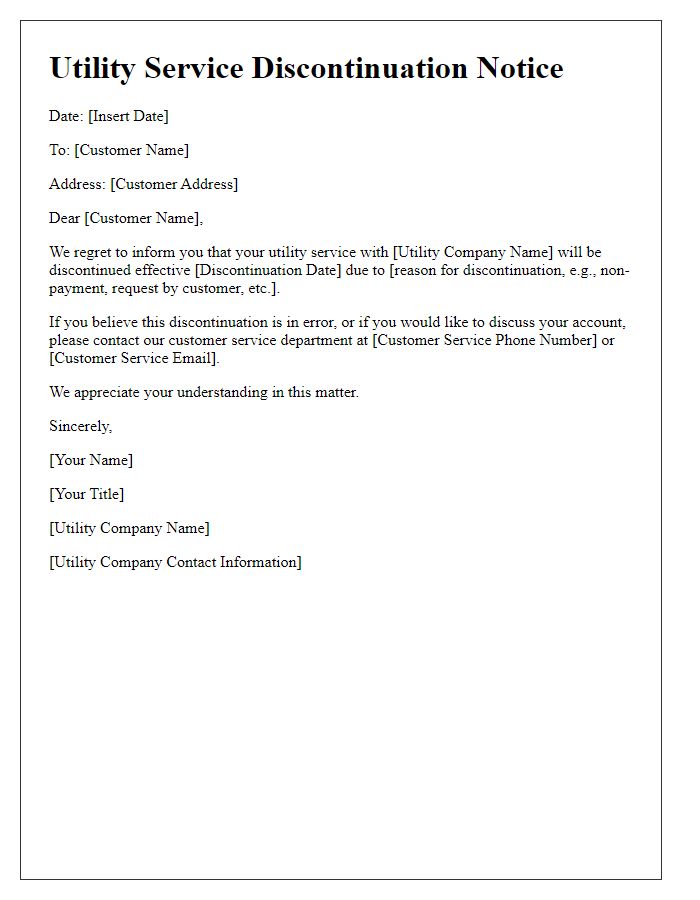

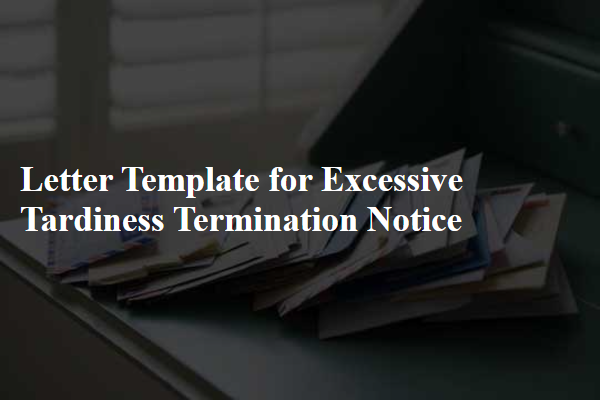
Comments